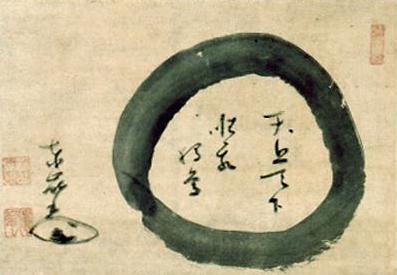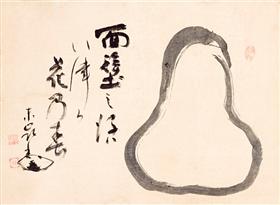Japan Buddhism and Tōrei Enji (1721-1792): Art and calligraphy
Lee Jay Walker
Modern Tokyo Times

Tōrei Enji (1721-1792) was a prominent and esteemed Zen Buddhist monk of the eighteenth century in Japan. He understood the complexity of religion and philosophy in his native country. Thus he desired to build bridges between the complex forces of the day. Therefore, he sought to reconcile the mass complexities and major differences concerning Zen Buddhism, Confucianism, Shintoism, and Taoism within the thought patterns of Zen.
The Institute for Zen Studies says, “Tōrei Enji was born into the Nakamura family, the proprietors of a pharmacy located in the station town of Obata (present Gokasho), on the eastern shores of Lake Biwa in present-day Shiga Prefecture. At the age of nine he went to the nearby temple Daitoku-ji, where he studied under the priest Ryōzan Erin.”

Hakuin Ekaku (1685-1786) and Tōrei were two instrumental Zen Buddhist monks who reinvigorated the Rinzai School of Buddhism in Japan. This Zen school of thought traces itself back to Myōan Eisai (1141-1215). Eisai – who belonged to the Tendai Buddhist sect – never renounced his status within this Buddhist school of thought. Indeed, he continued to practice the esoteric ways of Tendai until he finally left this world.
Eisai concerned himself with finding a new Buddhist way to the answers to this life. Hence, he traveled to China and gained great wisdom during his time in this country. In time, he would find opposition to his teachings in Kyoto. Thus he relocated from Kyoto after finding favor in Kamakura. Therefore, it was the warrior class in Kamakura who welcomed his teachings.

Bonhams says – concerning the above work of Tōrei – “The legendary gem or pearl which has to be wrested from the mouth of the Dragon King is often used in Zen writings as a metaphor for the difficulty of obtaining truth or enlightenment. It also represents the pure and undistracted state of a truly enlightened being.”
Tōrei sought a syncretic approach to Zen Buddhism, Confucianism, Shintoism, and Taoism. He understood how these forces – and the different sects within Buddhism – nurtured people and gave substance to life. Therefore, Tōrei hoped to unify these different thought patterns under the central mindset of Zen to cater to the well-being of society.

He was also a devoted son. Hence, the trappings of power did not distract Tōrei from his ideas of humanity. Thus on hearing that his mother was seriously ill – he returned home to care for his mother for two years until she finally passed away from this world. Therefore, this author, calligrapher, holy Buddhist monk, and painter had a gentle soul – and before passing away from this world, he returned home to a local temple knowing that it was time to rest from this life.
https://www.bonhams.com/auctions/24040/lot/83/?category=results
https://www.zenbunka.or.jp/en/pub_etc/exhibition/entry/20121019-1.html

PLEASE SUPPORT MODERN TOKYO TIMES by DONATING
Modern Tokyo News is part of the Modern Tokyo Times group
DONATIONS to SUPPORT MODERN TOKYO TIMES – please pay PayPal and DONATE to sawakoart@gmail.com
http://moderntokyotimes.com Modern Tokyo Times – International News and Japan News
http://sawakoart.com – Sawako Utsumi personal website and Modern Tokyo Times artist
https://moderntokyonews.com Modern Tokyo News – Tokyo News and International News
PLEASE JOIN ON TWITTER
https://twitter.com/MTT_News Modern Tokyo Times